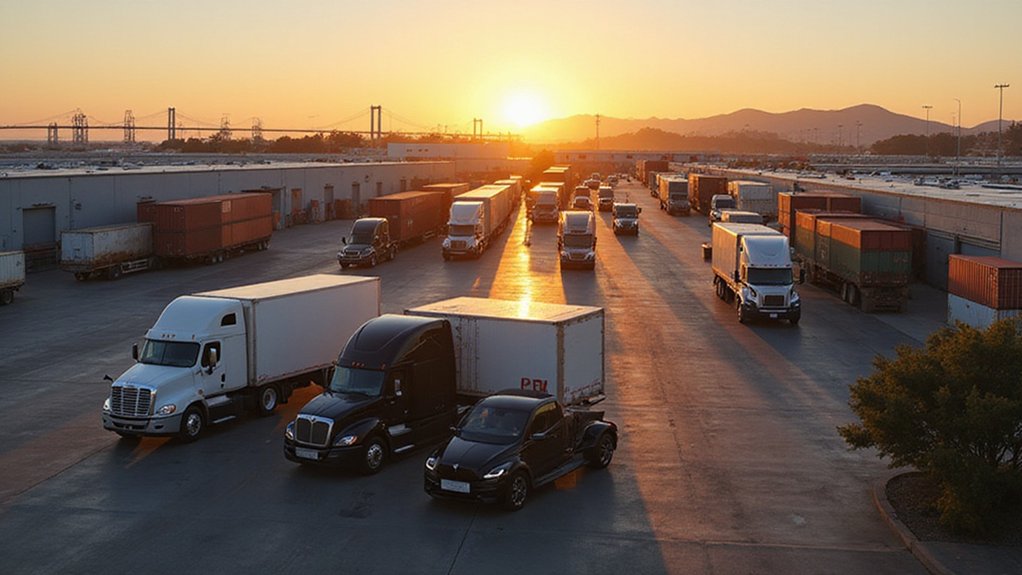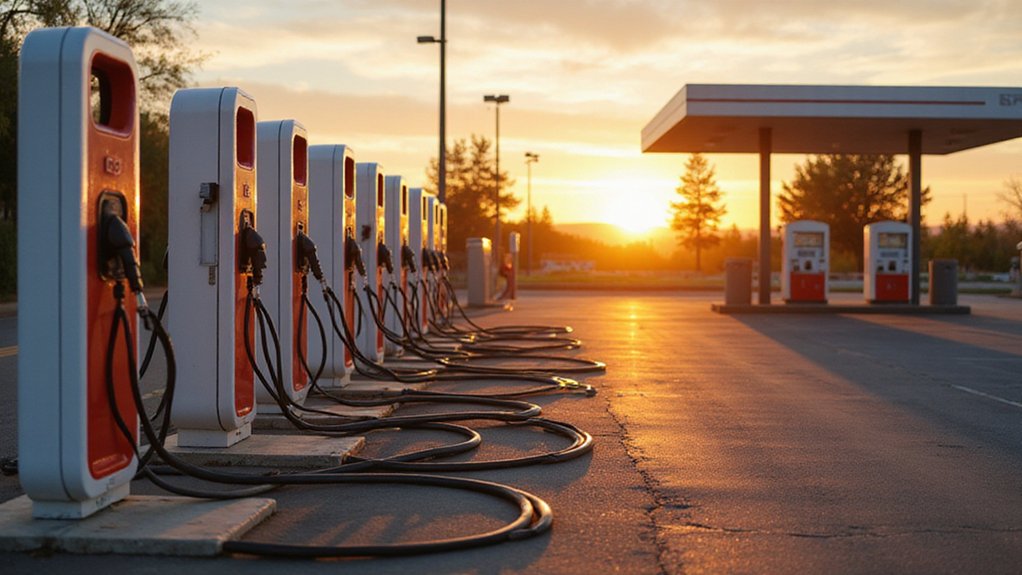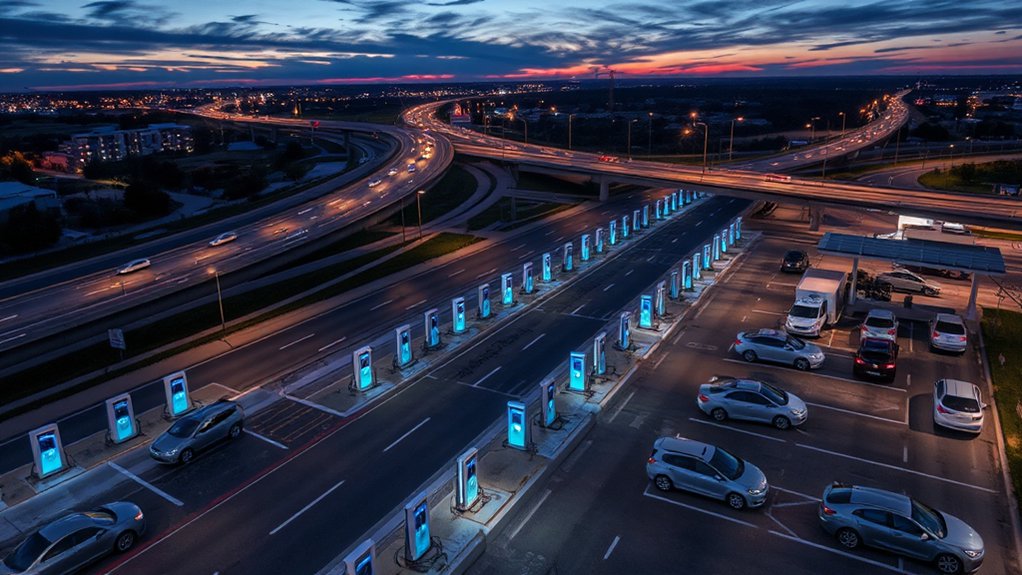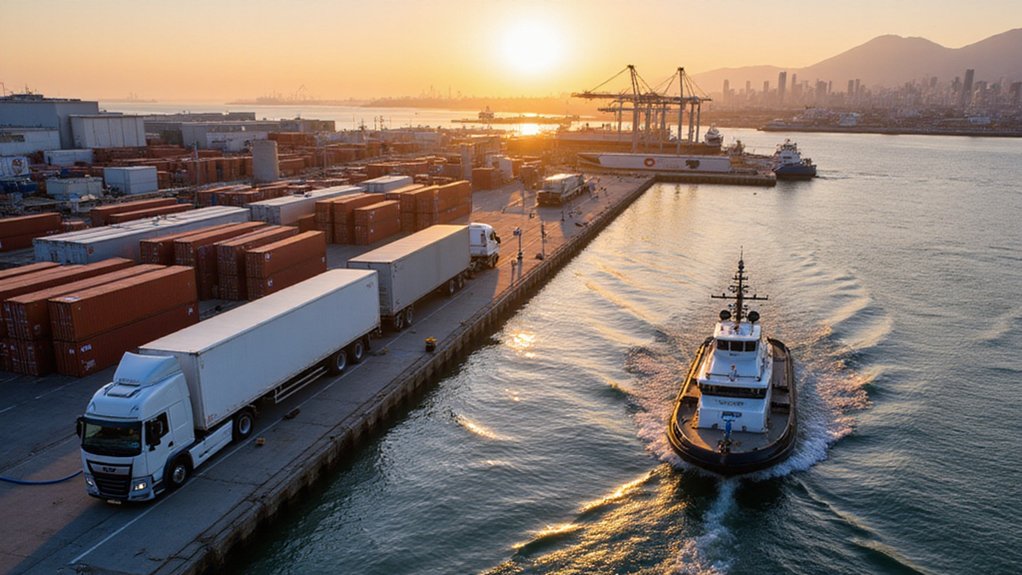California’s truckers are barreling toward an electric future, whether they like it or not. The state’s Advanced Clean Trucks Rule demands manufacturers sell increasing percentages of zero-emission vehicles starting in 2025. By 2035, over half of new medium-duty trucks and three-quarters of larger straight trucks must be electric. No exceptions, no excuses.
The rules hit drayage truckers first. Since January, only zero-emission trucks can join port and railyard fleets. Got an older diesel rig? Too bad. It’s banned from the TRUCRS registration system. California’s ports, already congested nightmares, now require truckers to go electric or go home.
Federal pushback came swiftly. Congress, backed by the Trump administration, revoked EPA waivers that allowed California to enforce these mandates. Two Congressional Review Act resolutions in June 2025 attempted to kill the state’s electric vehicle requirements. Senator Deb Fischer led one resolution targeting the Advanced Clean Trucks regulation specifically. Washington fundamentally told California to pound sand.
California isn’t backing down. The state continues enforcing its rules, arguing air quality improvements justify the regulations. Eleven states had already adopted the ACT rule before federal intervention. Ten more implemented Low-NOx standards. The regulatory cat was out of the bag.
Manufacturers face a brutal reality. Want to sell trucks in California? Better have electric models ready. The quotas ratchet up yearly through 2035. Miss your ZEV targets? Prepare for penalties. Some vehicle types get exemptions if electric versions don’t exist commercially, but those loopholes are narrow. This push comes as experts warn the nation’s energy grid received a concerning D+ infrastructure grade, highlighting the challenge of supporting rapid electrification efforts.
Fleet operators scramble to comply. Diesel engines must be 2010 or newer to operate legally. Older trucks face registration bans and port restrictions. Low-use exemptions offer minimal relief—just 1,000 miles annually. That’s barely enough to drive from Los Angeles to Portland and back. High priority fleets owning 50 or more vehicles nationally face even stricter reporting requirements and ZEV transition planning.
The At-Berth Regulation adds another layer, requiring emission controls for docked ships starting January 2025. California’s ports become ground zero for the electric shift, forcing change through sheer regulatory willpower.
The trucking industry watches this federal-state showdown nervously. California defies Washington’s attempts to pump the brakes on electrification. For truckers maneuvering these rules, the message is clear: adapt to battery power or find another route. The electric future arrives whether federal officials approve or not.
References
- https://www.peachstatetrucks.com/blog/news/carb-emission-regulations
- https://ww2.arb.ca.gov/new-california-requirements-road-and-road-heavy-duty-vehicles
- https://www.trucking.org/news-insights/trucking-industry-cheers-congress-abolishment-californias-ev-mandates
- https://ww2.arb.ca.gov/resources/fact-sheets/advanced-clean-fleets-regulation-exemptions-and-extensions-overview
- https://www.overdriveonline.com/regulations/article/15748373/trump-ends-californias-electric-truck-sales-mandate








